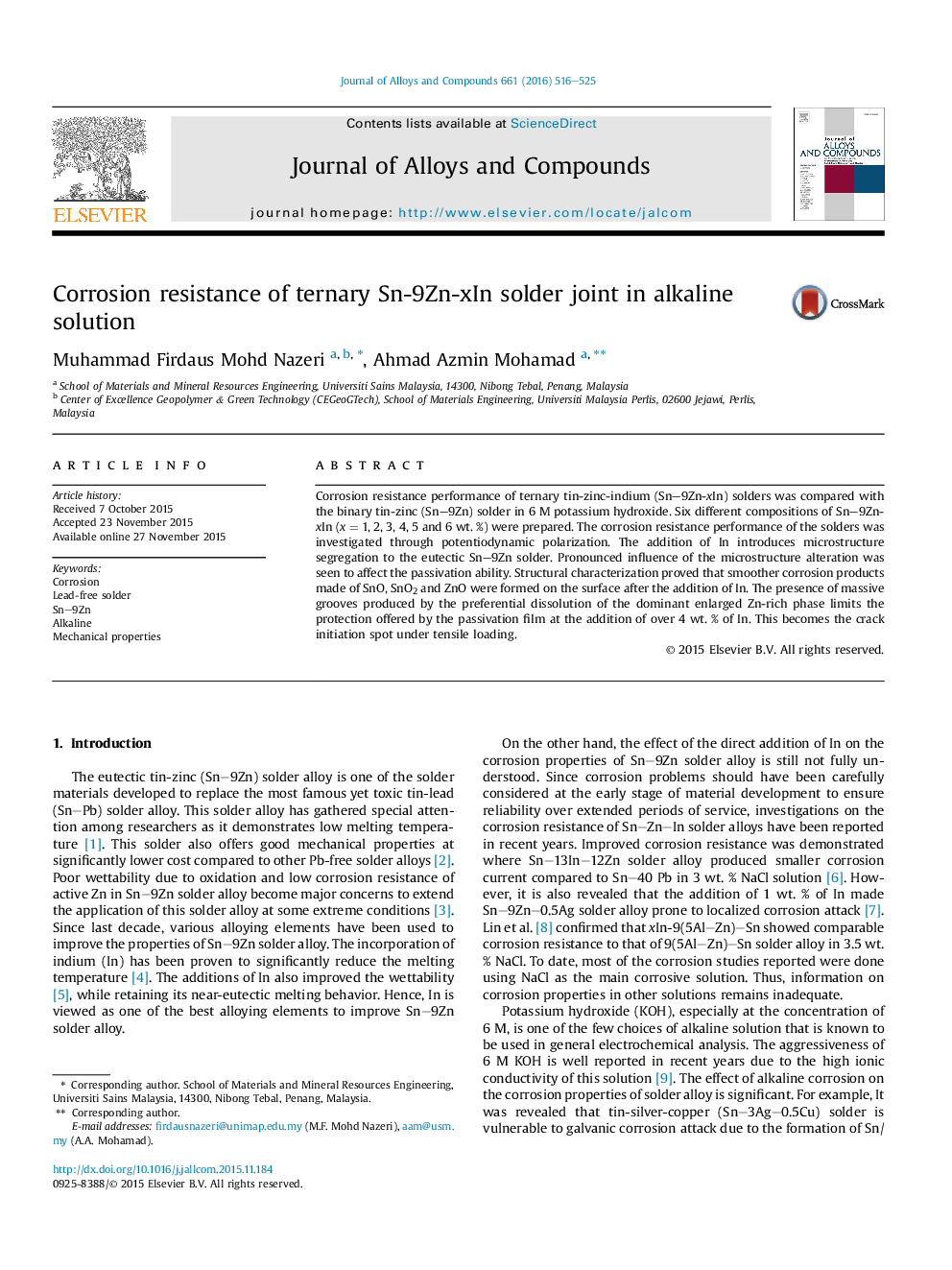| Article ID | Journal | Published Year | Pages | File Type |
|---|---|---|---|---|
| 1607081 | Journal of Alloys and Compounds | 2016 | 10 Pages |
Abstract
Corrosion resistance performance of ternary tin-zinc-indium (Sn-9Zn-xIn) solders was compared with the binary tin-zinc (Sn-9Zn) solder in 6 M potassium hydroxide. Six different compositions of Sn-9Zn-xIn (x = 1, 2, 3, 4, 5 and 6 wt. %) were prepared. The corrosion resistance performance of the solders was investigated through potentiodynamic polarization. The addition of In introduces microstructure segregation to the eutectic Sn-9Zn solder. Pronounced influence of the microstructure alteration was seen to affect the passivation ability. Structural characterization proved that smoother corrosion products made of SnO, SnO2 and ZnO were formed on the surface after the addition of In. The presence of massive grooves produced by the preferential dissolution of the dominant enlarged Zn-rich phase limits the protection offered by the passivation film at the addition of over 4 wt. % of In. This becomes the crack initiation spot under tensile loading.
Related Topics
Physical Sciences and Engineering
Materials Science
Metals and Alloys
Authors
Muhammad Firdaus Mohd Nazeri, Ahmad Azmin Mohamad,
